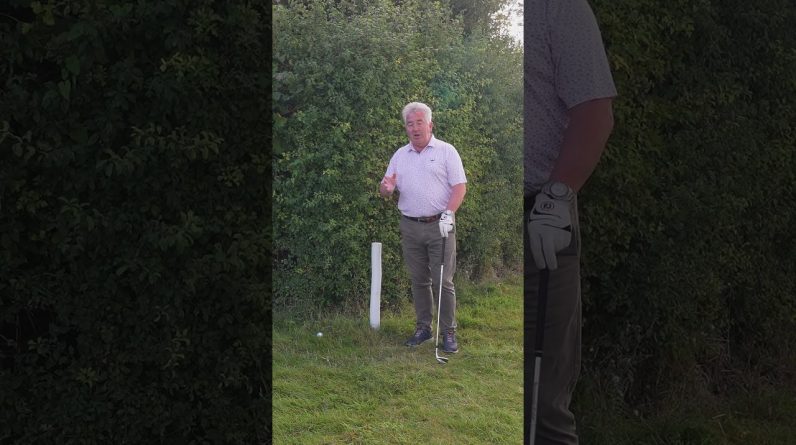This Is How I Build The Easiest Swing In golf
Understanding the Basics: What Makes a Golf Swing Easy?
Building the easiest golf swing starts with mastering fundamental principles that encourage consistency, power, and minimal stress on your body. An easy swing focuses on simplicity, natural movements, and repeatability so that you can achieve better performance with less effort.
Some key characteristics of an easy golf swing include:
- Smooth tempo that feels natural
- Minimal strain on the wrists and shoulders
- Consistent contact with the ball
- Balanced stance throughout the swing
- Efficient transfer of weight for power
Step-by-Step: How I Build the Easiest Swing in Golf
Step 1: Perfecting Your Setup and Grip
Before any swing happens, your setup and grip determine the foundation of the entire shot. Here’s how to get it right:
- Neutral Grip: Hold the club with your hands rotated neither too far left nor right to avoid slicing or hooking the ball.
- Posture: slight bend from the hips, knees flexed, and balanced weight distributed evenly on both feet.
- Ball Position: Position the ball just ahead of the center of your stance for irons, and closer to your front foot for woods and driver.
Align your shoulders parallel to your target line—this simple setup primes your body for a controlled, repeatable swing.
Step 2: The Takeaway – Easy and Slow
A smooth, slow takeaway sets the tone for an easy swing. Avoid rushing your backswing.
- Begin the clubhead slowly away from the ball with your shoulders turning naturally.
- Keep your wrists relaxed; avoid flipping or twisting prematurely.
Step 3: Controlled Backswing and Top position
Don’t over-complicate this. The easiest swings feature a backswing where the club reaches about parallel to the ground, rather than forcing a full, complicated rotation.
- Allow your left shoulder (for right-handed players) to turn under your chin naturally.
- Keep your head steady and eyes focused on the ball.
step 4: Transitioning to Downswing with Weight Shift
The transition is where many golfers get tangled:
- Begin moving your hips toward the target first before your arms follow.
- Shift your weight from your back foot to your front foot smoothly.
- Keep your hands passive during transition — hold the clubhead’s lag, don’t release it too soon.
Step 5: Impact – The Moment of Truth
Focus on solid contact and balance.
- Extend your arms naturally towards the target during impact.
- Your hips should be open toward the target; your weight resting mostly on the front foot.
- Maintain a steady head position to ensure consistent ball striking.
Step 6: Follow-Through and Finish
The easiest swings don’t abruptly stop after impact—they flow smoothly all the way through.
- Allow your body to rotate fully, with hips and chest facing the target.
- Keep your balance; a well-balanced finish indicates good swing mechanics.
Benefits of an Easy Golf Swing
| Benefit | Why It Matters |
|---|---|
| Consistency | Simplified motion leads to fewer mishits and more predictable shots. |
| Reduced Injury Risk | Minimizing stress on joints keeps you playing longer and pain-free. |
| Faster Learning curve | Beginners and intermediate players improve quicker by avoiding complexity. |
| Improved Confidence | A simple, reliable swing builds trust in your skills on the course. |
| Increased Enjoyment | Less frustration means more fun and motivation to play regularly. |
Practical Tips to Maintain the Easiest Swing
- Practice Slow: Use slow-motion swings to build muscle memory.
- Use Alignment Aids: Place clubs or markers on the ground to help with stance and swing path.
- Film Yourself: Recording your swing helps identify inconsistencies and areas for simplification.
- Warm Up Properly: Gentle stretching and shorter swings reduce stiffness.
- Stay Relaxed: Tension kills flow—focus on breathing and wrist softness.
Case Study: From Struggle to Swing Success
Meet Chris, an amateur golfer who struggled with slicing and inconsistency. After adopting the easy swing methodology,here’s what changed:
| Before | After (6 weeks) |
|---|---|
| Fast backswing causing loss of control | Slow takeaway enhanced consistency |
| Over-rotation leading to balance issues | Controlled hip turn improved balance and distance |
| Frequent hooks and slices | Neutral grip and proper weight shift reduced shot errors |
| Frustration and low confidence | Reliable swing increased enjoyment and scores |
Chris now approaches every round confidently and appreciates how simplicity can transform a frustrating game.
First-hand Experience: My Journey to Building the Easiest Swing
When I started working on my golf swing, I realized that trying to do too much was the root cause of inconsistencies. Simplifying was revolutionary.By focusing on fundamentals like grip, posture, and smooth rhythm, I regained control and improved my scores substantially. The key was to build a swing I could trust under pressure, not just in practice.
Trust the process and listen to your body—the easiest swing is one that feels good and adapts naturally to your style.
Key Elements Recap for Building the Easiest Golf Swing
| Element | Action | Impact |
|---|---|---|
| Grip | Neutral and relaxed | Prevents slicing or hooking |
| Posture | Balanced, athletic stance | Provides stable base for swing |
| Takeaway | Smooth and slow | Sets tone for controlled swing |
| Backswing | Parallel club at top | Encourages repeatability |
| Transition | Initiate with hips | Adds power and prevents tension |
| Impact | Weight on front foot, extended arms | Solid contact with ball |
| Follow-through | Full rotation and balanced finish | Confirms proper mechanics |







